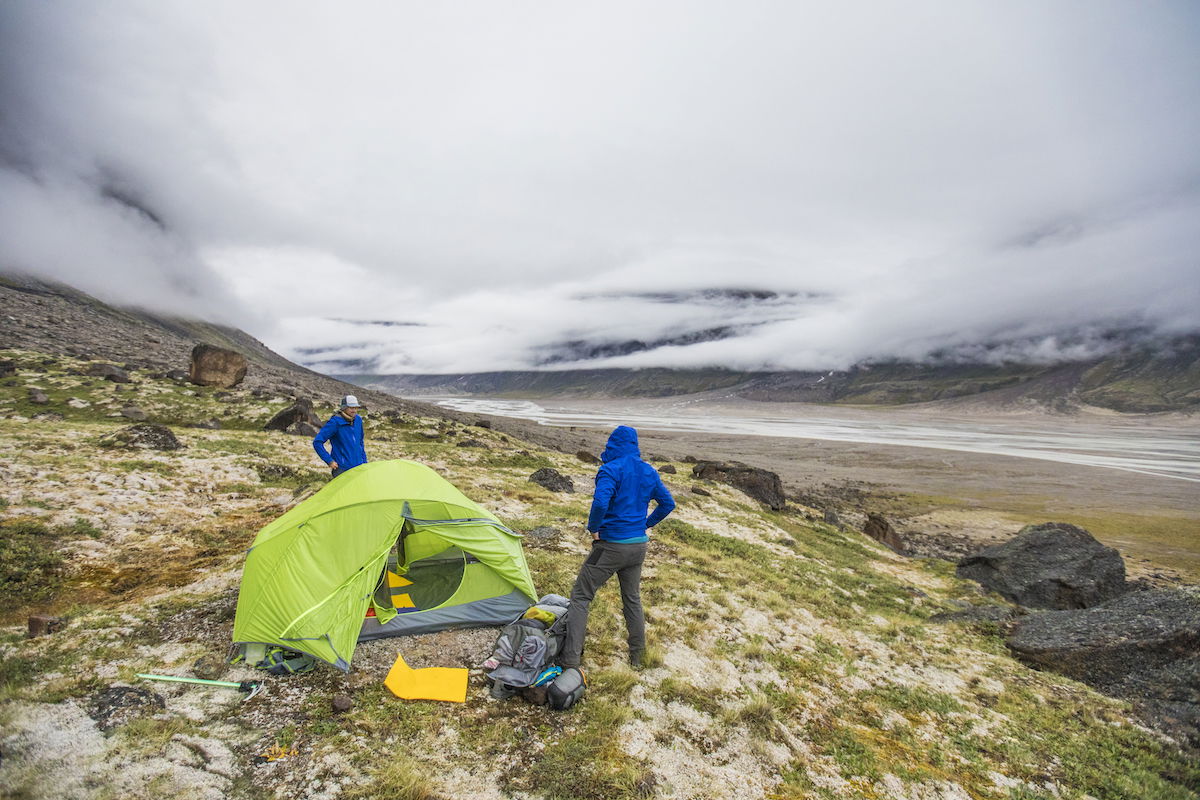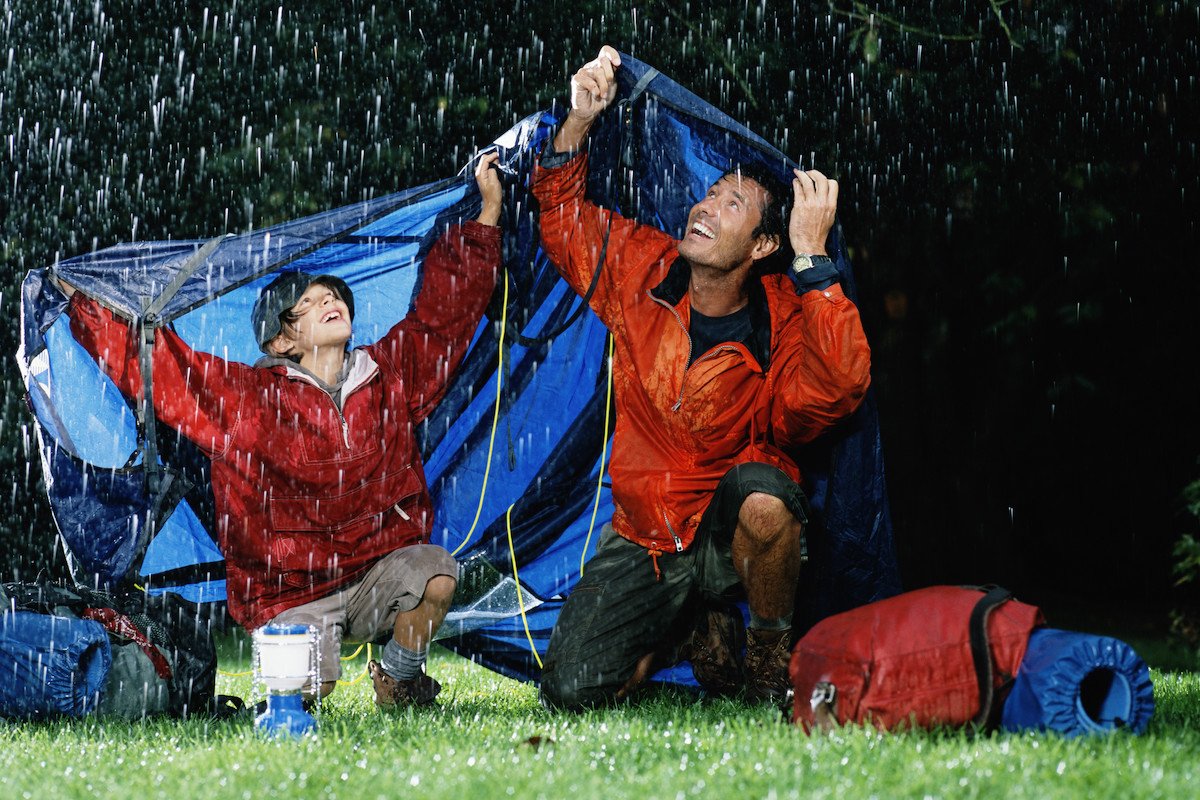If you spend enough time outdoors, you’ll eventually run into bad weather. In fact, it’s inevitable. But just because it rains doesn’t mean you have to pack up your campsite and go. There are plenty of ways to endure or survive — or however, you want to describe it to your friends later on — during inclement weather. For this article, we’ve compiled six tips for camping in the rain.
Hit-up the Hardware Store
Your first stop in preparing for a wet weekend of tent camping is the hardware store. There are a handful of relatively inexpensive items you should keep on hand.
Tarps
Grab several tarps of varying sizes. At least two of them should be at least as large as the footprint of your tent. A couple of small 6×8- or 8×10-foot sizes are really handy, too.
Rope
When you buy rope, get something small in diameter but strong. Para-cord will work fine for most needs. While you can buy it in almost any length, we suggest buying a whole roll to be safe. Plus, it lasts forever. With a bulk supply, you can cut exactly the lengths you need when you need them.
Bungee Cords
Bungee cords are one of the greatest gifts for camping. They’re invaluable when it comes to securing tarps, making lines taut, and battening down gear from being blown to the next campsite. You can never have enough bungees when you’re camping.

Duct Tape
Duct tape is perhaps the most versatile tool in the history of mankind. It’s used for adhoc repairs by everyone, including NASA astronauts. Bring a few rolls on every camping trip. Its uses are limited only by your imagination … and sitting inside a tent, and listening to the rain will lead you to be pretty creative.
Contractor’s Garbage Bags
Spend the extra bucks and get a box or a roll of the really strong, big garbage bags. They’re often called “contractor’s garbage bags.” No, they’re not the greenest thing on the planet, but if it makes you feel better, you can dry them out and reuse them after they’ve protected your gear … or even your kid who needed an impromptu rain poncho.
Set-up on High Ground
When you search for a spot to set up camp, try to find one on high ground with good drainage in every direction. And stay away from rivers, creek bottoms, and even lake shores because if it rains, it’ll run off into those areas. In short, picking a good spot is going to prevent a lot of problems if it rains.
Layer Your Tarps
This step assumes you hit up the hardware store like we suggested and buy at least two tarps. Use one tarp to protect the floor outside of your tent and the other to protect the floor inside of your tent. In other words, external and internal layers.
With the external layer, fold the tarp so it’s slightly smaller than the footprint of your tent. You’ll want the edges a few inches inside of the perimeter all around, so it won’t catch and channel rain under the tent.
And then, the internal layer will add another layer of protection. When the sun does come out, all you have to do is pull it out, dry it, and sweep away the collected mud and dirt. It’s way easier than cleaning the tent floor on your knees when the tent is set up, and it’s still damp.

Cover It Up
When it starts raining – or maybe before it does – put everything you don’t want wet in a garbage bag (sealed with duct tape) or under a secured tarp. It’s not crazy to do both either! That’s actually the best way to handle firewood.
Keep Gear Off the Ground
Obviously, you’ll cover everything to protect it from the weather, but gear gets wet (at least soggy, gross, and damp) by pulling moisture out of the wet ground, too. Since most campsites have a picnic table, use it as your high and dry platform. You can use it along with your tarps and garbage bags to organize and secure gear so it stays dry.
Of course, if gear does get wet, you’ll want to hang it out in the sun to dry, so why not get ahead of the game and string a clothesline up as soon as you get to camp.
Don’t Forget the Car
The driest, cleanest, most secure spot in your campsite during a rainstorm is going to be the inside of your car. That’s where your valuables can ride out the storm. In preparation for forecasted rain, think ahead and park the car as close to the tent as possible. If it storms during the night, young campers may feel safest in the car, and that’s fine. Let them sleep there. You want their memories to be good ones so they’ll ask to go camping again.
What are your tips for staying dry on the campsite? Tell us in the comments below.
